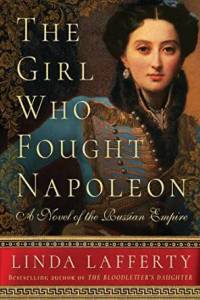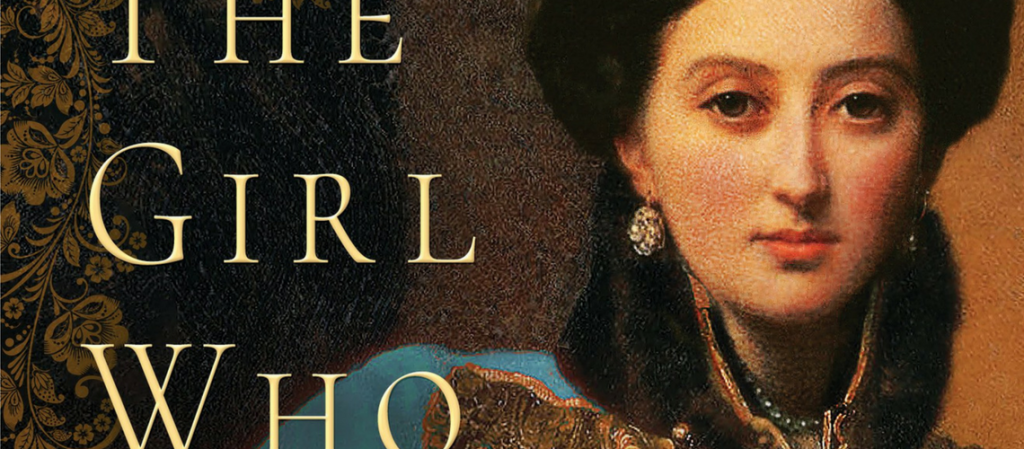The world seems to be enamored with period dramas that take place in the U.K., like Downton Abbey, the Tudors, and the White Queen. There is actually an entire website dedicated to Regency, Victorian, and Edwardian period dramas called Willow and Thatch. Truly, with the exception of the Borgias, I cannot think of a period drama that doesn’t take place in the U.K. Isn’t that sad? So, when I sat down to read the Girl Who Fought Napoleon by Linda Lafferty, all I could think about was how badly I wanted this to be optioned for a TV mini-series. Lafferty brings Russia during the Napoleonic Wars to life both in the warm and seemingly safe Winter Palace as well as the bloody battlefields. Further, this 430 page novel seems to fly right by; the plot is paced perfectly and is filled with action, suspense, treason and betrayal.
 The Girl Who Fought Napoleon by Linda Lafferty
The Girl Who Fought Napoleon by Linda Lafferty
Released: September 20, 2016
Publisher: Lake Union Publishing
Add to Goodreads
★★★★☆
In a sweeping story straight out of Russian history, Tsar Alexander I and a courageous girl named Nadezhda Durova join forces against Napoleon.
It’s 1803, and an adolescent Nadya is determined not to follow in her overbearing Ukrainian mother’s footsteps. She’s a horsewoman, not a housewife. When Tsar Paul is assassinated in St. Petersburg and a reluctant and naive Alexander is crowned emperor, Nadya runs away from home and joins the Russian cavalry in the war against Napoleon. Disguised as a boy and riding her spirited stallion, Alcides, Nadya rises in the ranks, even as her father begs the tsar to find his daughter and send her home.
Both Nadya and Alexander defy expectations—she as a heroic fighter and he as a spiritual seeker—while the battles of Austerlitz, Friedland, Borodino, and Smolensk rage on.
In a captivating tale that brings Durova’s memoirs to life, from bloody battlefields to glittering palaces, two rebels dare to break free of their expected roles and discover themselves in the process.
This story is also told in alternating perspectives.
But, it’s not what you would expect. Typically, that would imply first person perspectives from two main characters, but that is not the case with the Girl Who Fought Napoleon. Lafferty makes an interesting choice to write the narrative from both first person perspective as well as third person subjective. I’ve never read a novel that alternates between first person and third person, so that did take a few chapters to get used to. However, it’s a storytelling method that I appreciated, especially for this particular story. The Girl Who Fought Napoleon is based on the memoirs of Nadezhda Durova (the Calvary Maiden), so the obvious choice would be to tell the story in first person. This story is hers, after all. But, that would offer the reader such a limited view of what was happening in Russia during this point in history. Switching to a third person point of view allows readers to peek inside the Winter Palace– to get to know the paranoid Tsar Paul and the reluctant soon-to-be Tsar Alexander, to witness assassination plots and royal affairs, to understand the political turmoil rumbling across Europe as the tides of the Napoleonic Wars lap at Russia’s borders.
The biggest challenge in understanding the alternate POV had less to do with the actual point of view and more to do with the timeline
The timeline tends to bounce back and forth. For example, the story starts in 1783, which is when Nadezhda Durova is born. The next chapter jumps six years to Christmas 1789, when young Alexander and his family are opening presents. Then the next chapter jumps back to 1785 to reveal more about Nadezhda’s life. Then to 1790…and 1799…and back to 1789. Trying to remember when certain events happened was futile; I eventually stopped reading the date headers because it was distracting me from the story.
By the way, can we talk about how amazing Nadezhda Durova is?
First, the story seems a little cliché– young woman dresses up as a man so she may live life with more freedom. In Nadezdha Durova’s case, it was to escape restrictions and tedium of “women’s work” and to help save her homeland. Second, it seems kind of far-fetched that during the early 1800s, a young woman would trick her way into the military and dupe everyone for nearly a decade, save a bunch of lives with very little military training, receive recognition from the Tsar himself, help lead victories over the Grand Armee, and live to retire and then write a memoir about it. BUT IT’S TRUE. IT’S TOTALLY FREAKING TRUE! That is reason enough to read this novel– you need to know Nadezdha Durova!
Overall, I really enjoyed the Girl Who Fought Napoleon. It’s one of those books that looks long but somehow you manage to breeze through 100 pages before you even finish eating your box of bon bons (and it’s not even a particularly large box of bon bons either). I just found myself not only fascinated by Nadezhda, but also with Russia during the early 1800s. I think the only reason why I managed to not consult wikipedia during my readthrough is because the novel was such a page-turner. Should you read this one? Definitely!




Leave a comment